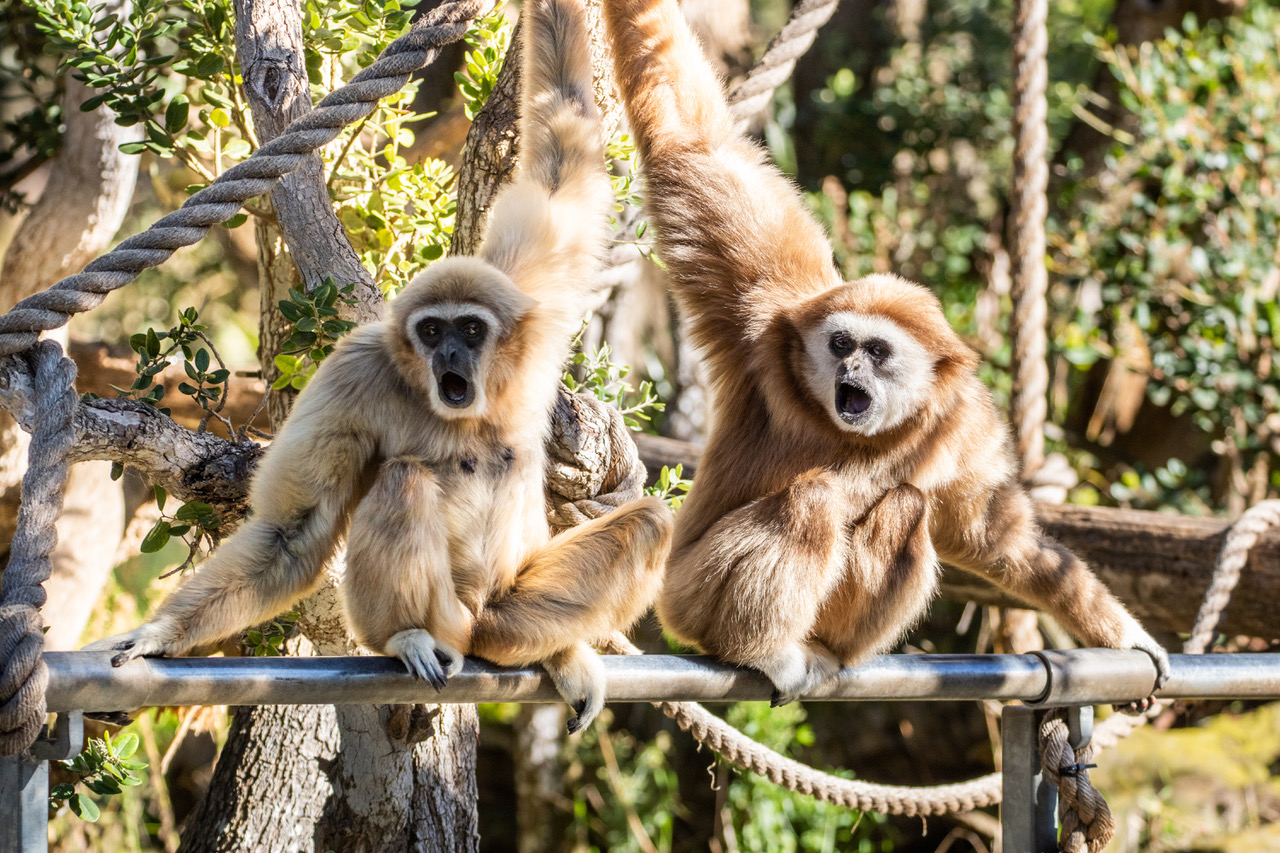After Rough Few Years, Elderly Zoo Gibbon Gets New Mate
Bono Joins Jasmine from Sequoia Park Zoo

It’s been a rough few years for Jasmine, the Santa Barbara Zoo’s elderly white-handed gibbon. The small apes are social creatures who live in lifelong monogamous pairs, and in 2016, Jasmine lost her longtime mate, Gulliver, to natural causes just days before his 40th birthday. Then, last year, her new companion, Jari, died in a freak accident in their exhibit.
Last week, Jasmine welcomed a new male into her life with the arrival of 37-year-old Bono (pronounced BOH-no) from the Sequoia Park Zoo. Bono had also recently lost his companion. The two were matched by the Association of Zoos and Aquariums (AZA), which manages their species in accredited zoos across the country. “We look forward to Jasmine and Bono living out their golden years here,” said Dr. Julie Barnes, the Santa Barbara Zoo’s Vice President of Animal Care and Health.

At 42, Jasmine is currently being treated for diabetes, but since the arrival of Bono, “she’s been exhibiting positive behaviors I’ve never seen before in the 15 years I’ve worked with her,” said senior keeper Heather Leith. “We are happy to see her so engaged.”
White-handed gibbons are native to Thailand, the Malaysian peninsula, and north Sumatra. They spend their entire lives in the tall trees of tropical rainforests, using their long arms to swing about the canopies. They eat fruit, young leaves, and some small invertebrates, and they seem to especially like fleshy, sugary fruits and figs. They stake out and defend their territory with loud singing and spectacular gymnastic displays. Destruction of the rainforests and poaching are the main threats to their survival.




You must be logged in to post a comment.